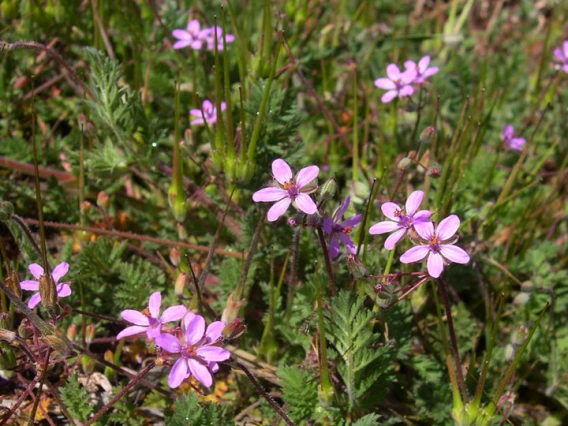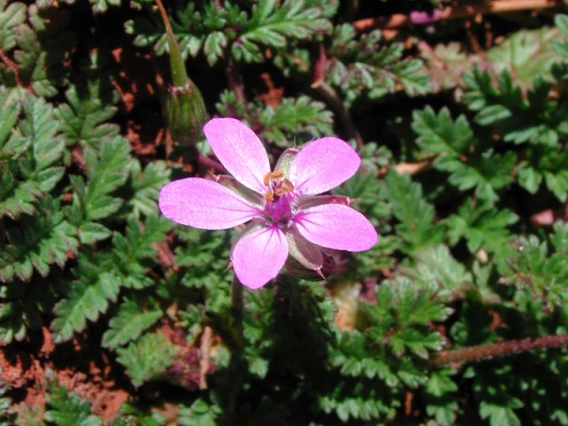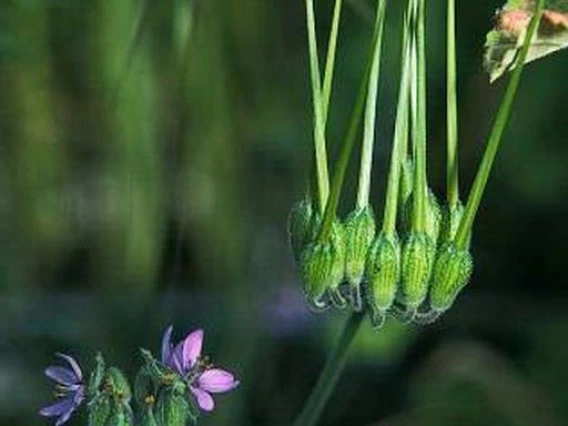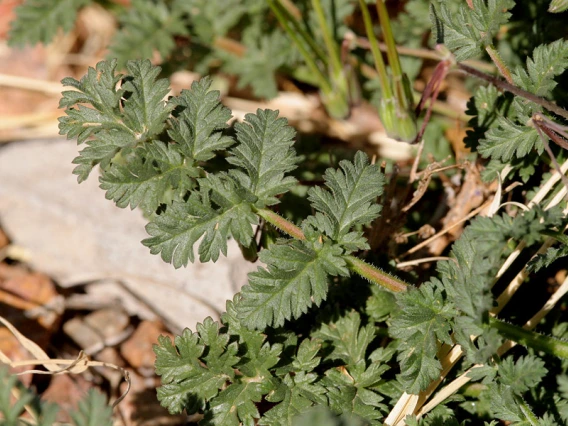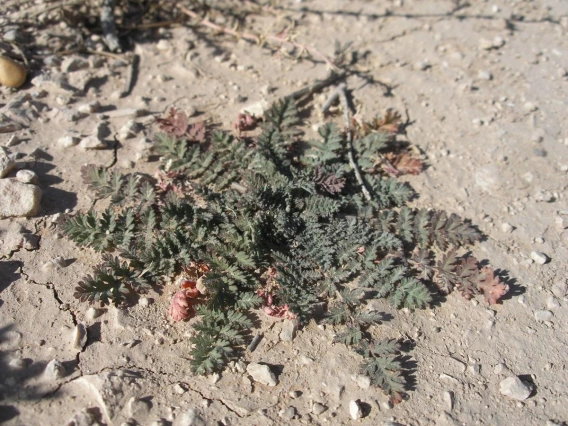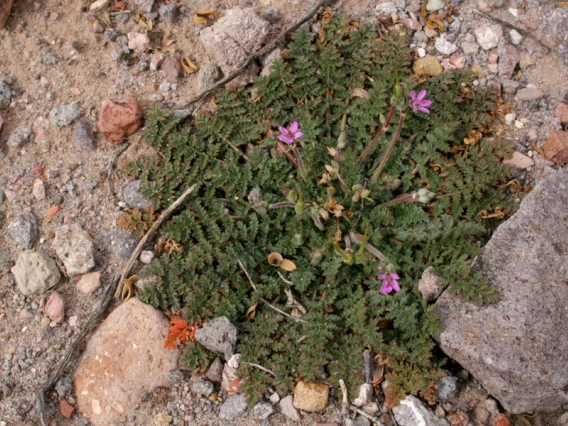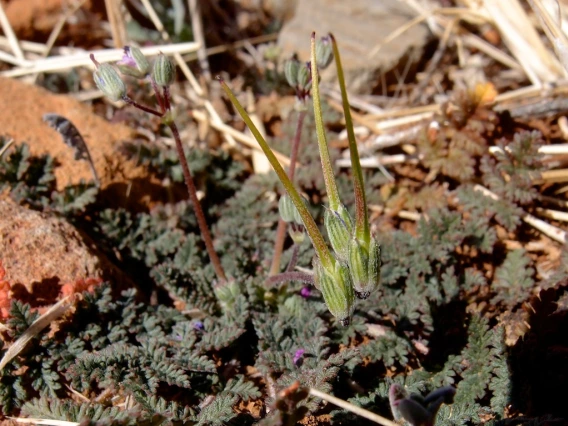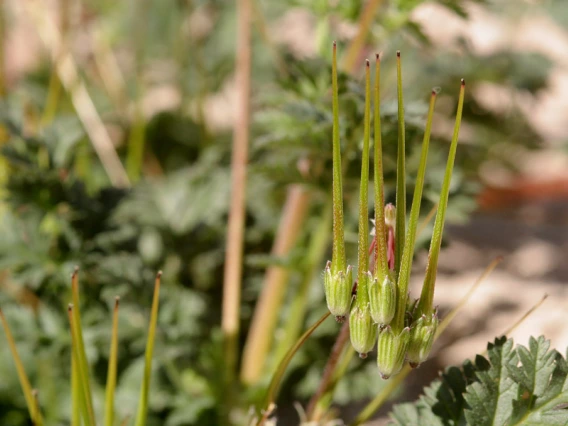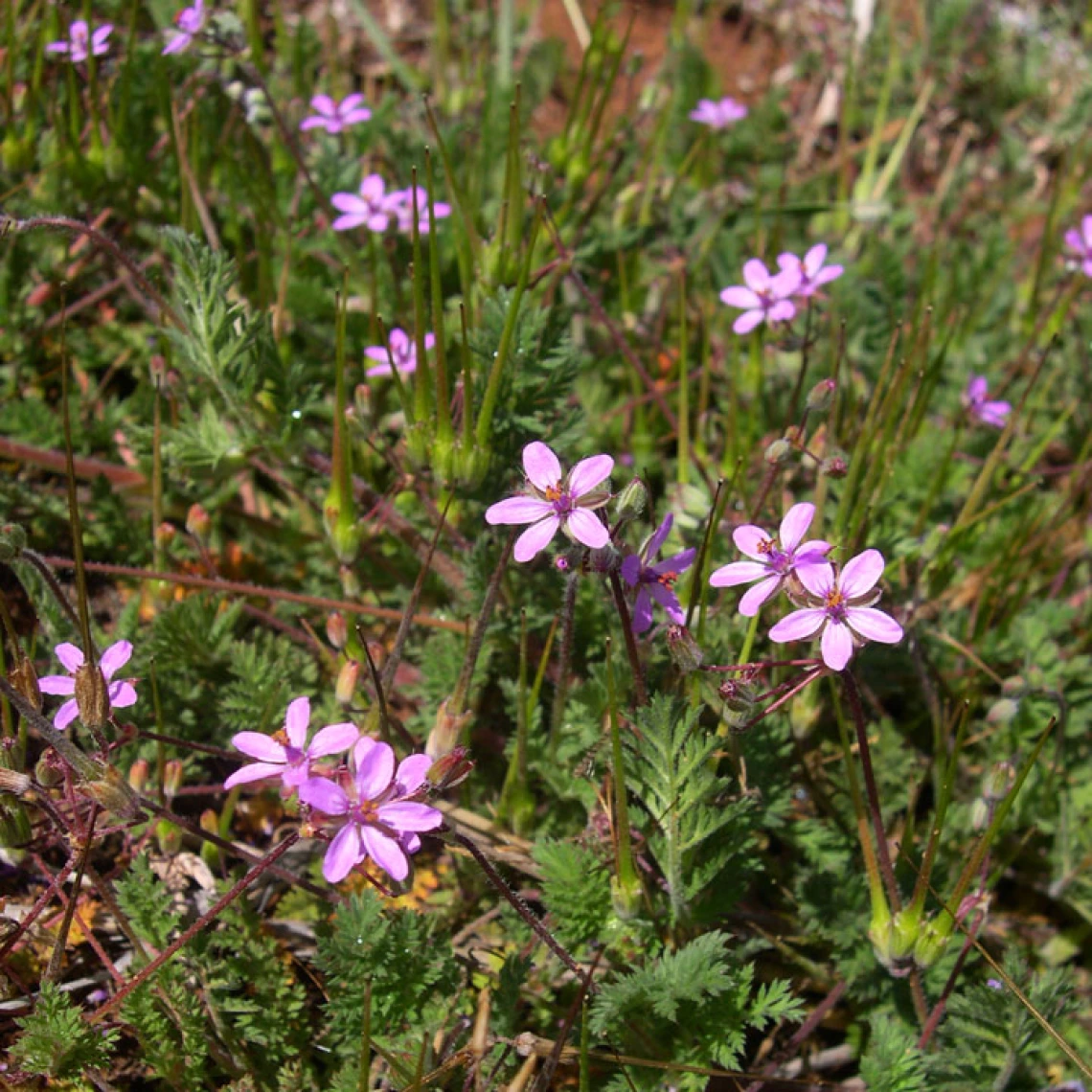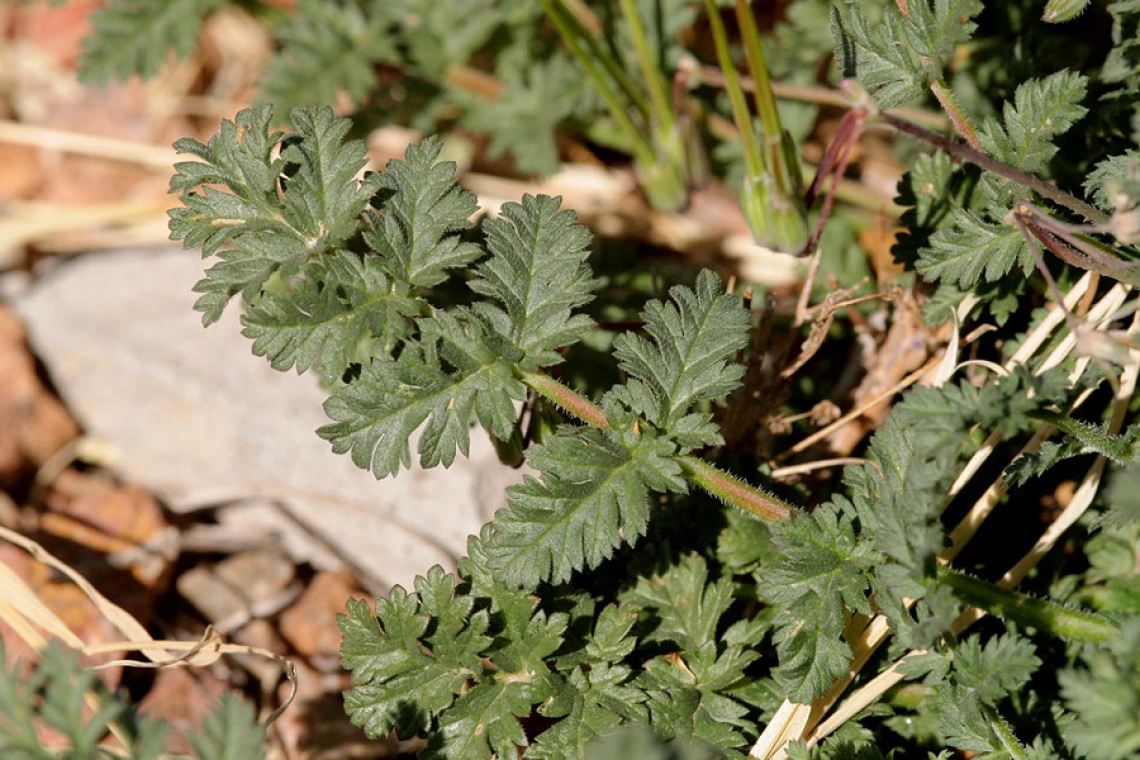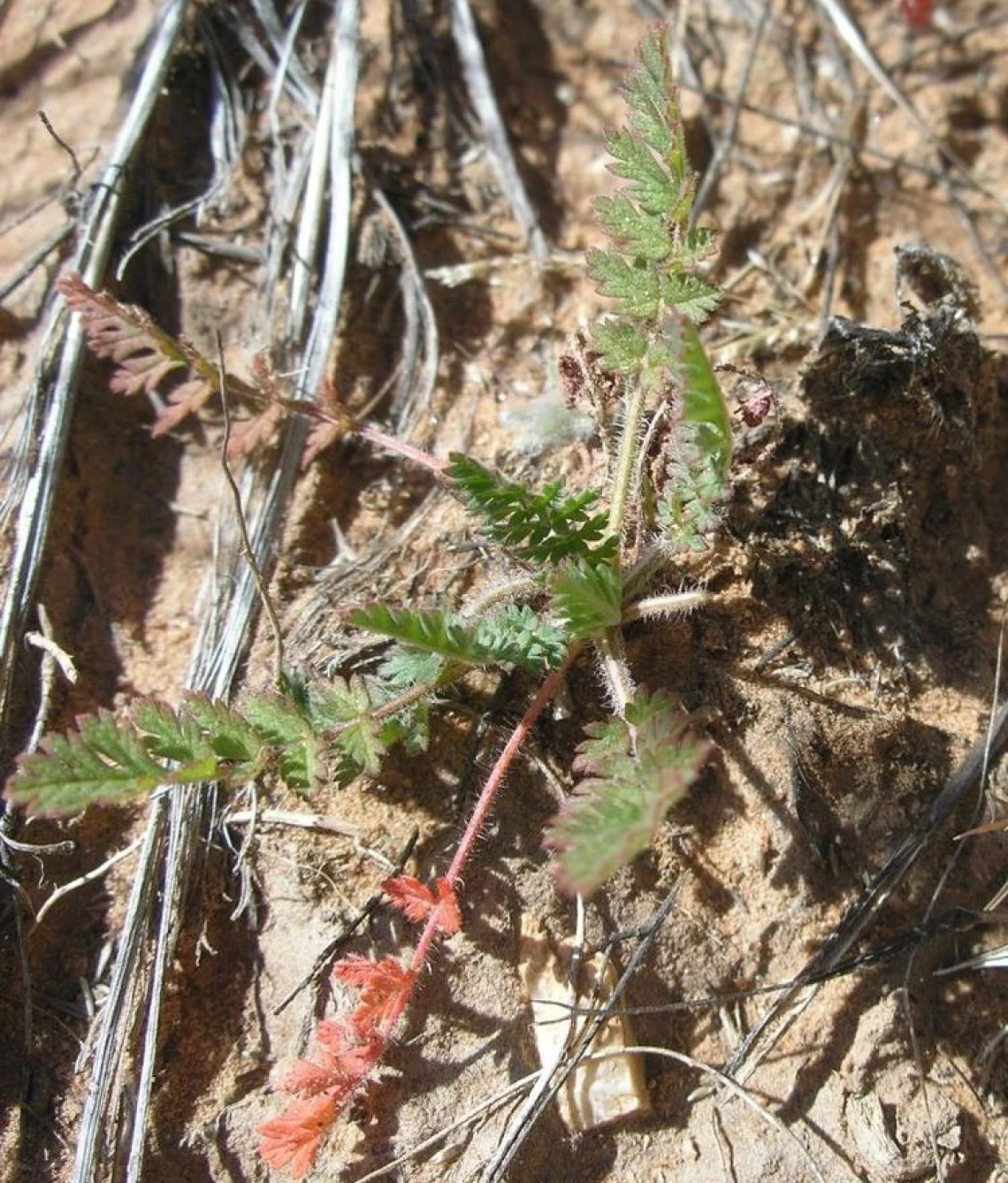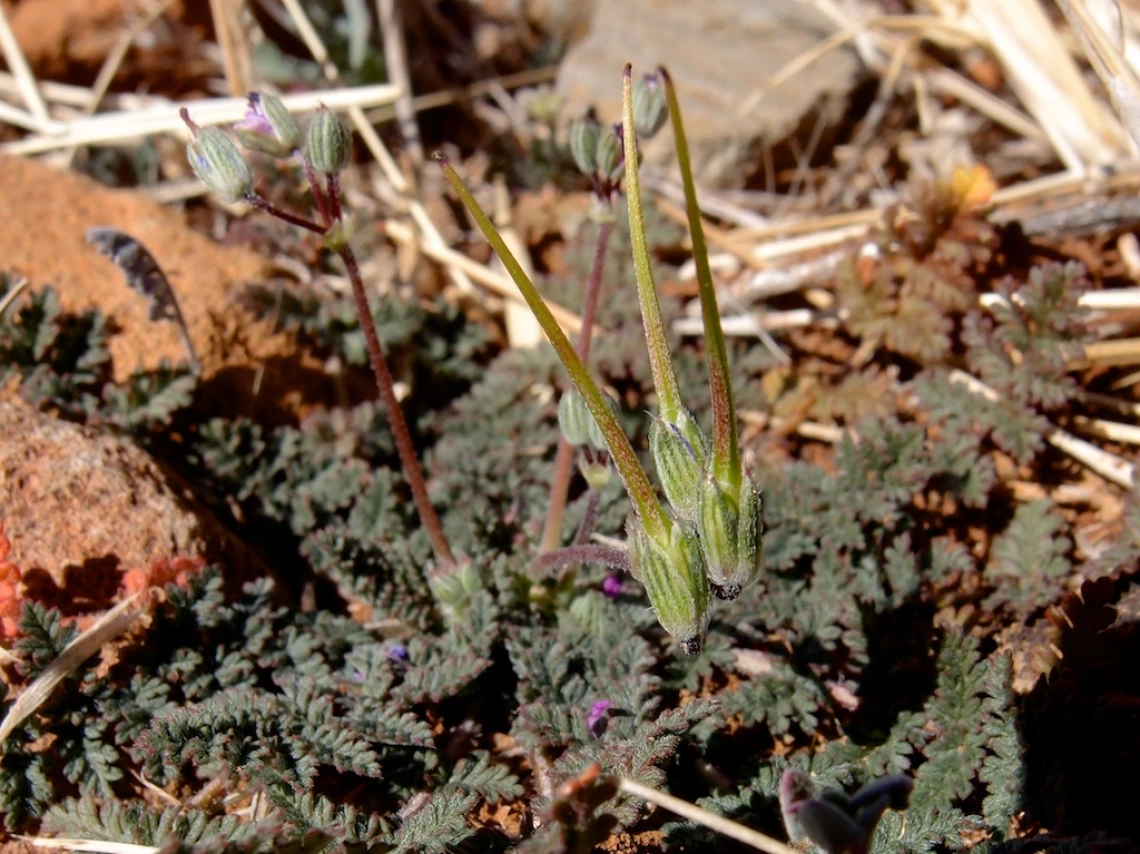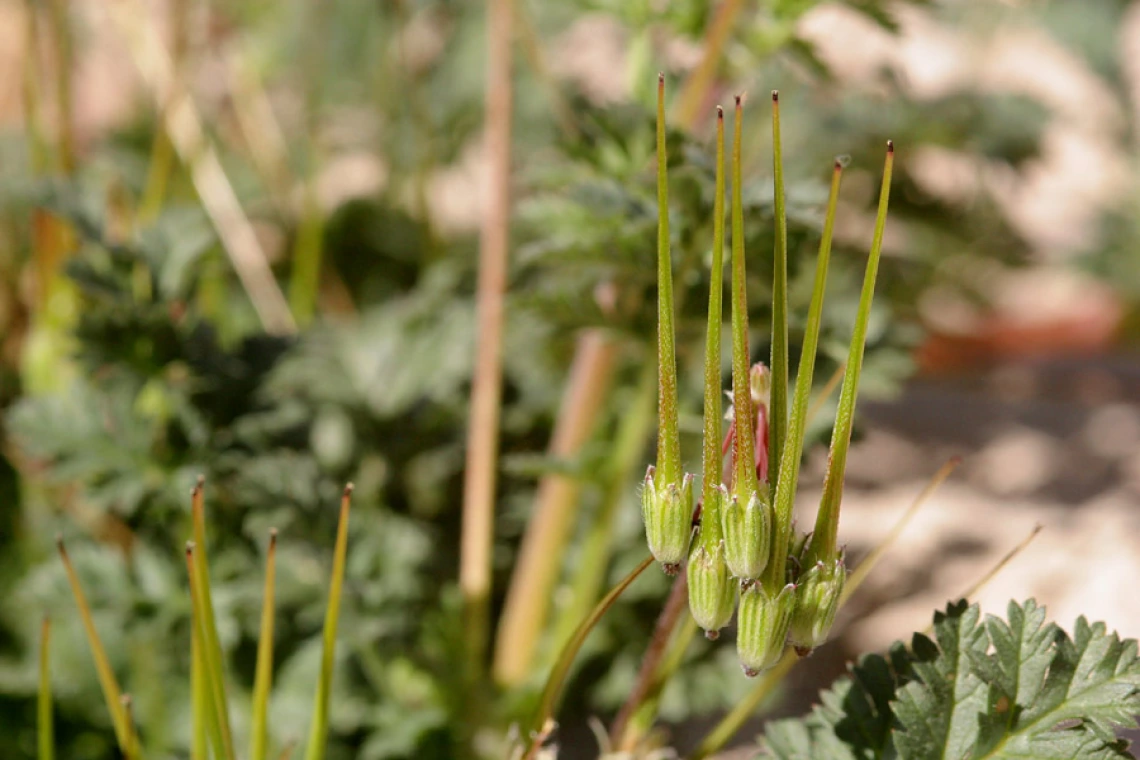Image
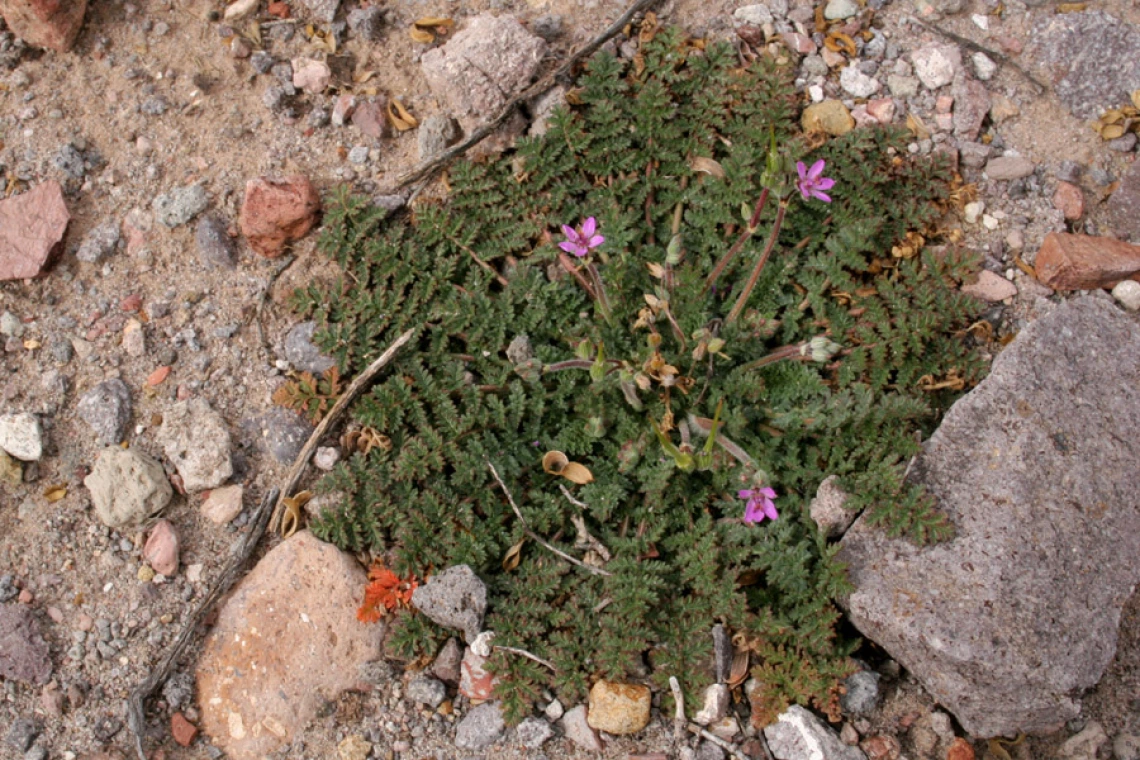
Filaree habit
Patrick Alexander, swbiodiversity.org/seinet
Common Name(s)
Filaree
Redstem filaree
Cranesbill
Storksbill
Scientific Name
Erodium cicutarium
Family
Geranium family (Geraniaceae)
Reasons for concern
This plant is very adaptable and can survive in a wide variety of soil and climate conditions. Its habit of growing flat and close to the ground prevents the germination of desirable native species important to wildlife and pollinators. Its seeds survive for a long time in the soil.
Classification
Non-native
Botanical description
Low‐growing and spreading herbaceous plant with a strong, pungent smell.
Leaves
Feathery, fern-like and hairy. Very delicate. Each leaf is made of up 3 to 9 fern-like leaflets that are opposite each other on the stem.
Stem(s)
Numerous stems. Leafy and hairy. Usually reddish. Stems form a rosette of dark green leaves that grow very close to ground.
Flowers
Plants have 2 to 12 small 5-petaled flowers that appear as early as February through July on 4 inch hairy stalks in clusters. Pink to purple in color.
Seeds
Fruits are long and pointed with 5 lobes, and a characteristic beak-like projection.
Roots
Shallow rooted. Thick and white central taproot with fibrous lateral roots.
Native to
Europe or Asia
Where it grows
Grows in full sun in gardens, lawns, roadsides, and fields. Wide elevation range, 1,000 to 7,500 feet.
Lifecycle
Winter annual or biennial
Reproduction
By seed
Weedy Characteristics
Each plant can produce between 2,000 and 10,000 seeds. When seed pods open, fine seeds are flung far from the mother plant, spreading into new territory. Each seed has a long tail that coils into a spiral when dry, and burrows its way into the soil. Seeds are carried by water and in animal fur or feathers to new locations. This plant flourishes in early spring when there is more precipitation than usual.
Look-alike Plants
Native Texas stork’s bill (Erodium texanum) can be distinguished by lobed leaves, as opposed to the dissected leaves of filaree, and larger flowers and petals.
Control Strategies
Eradicate plants when they’re young and easier to pull, dig or hoe. Do not let them go to seed. Keep track of weedy patches, and check them regularly. Try heavy mulch. Plant desirable species to outcompete invasives.
References
- Filaree University of California Agriculture and Natural Resources – IPM Weed Gallery
- Redstem filaree Integrated Pest Management, Utah State University Extension

